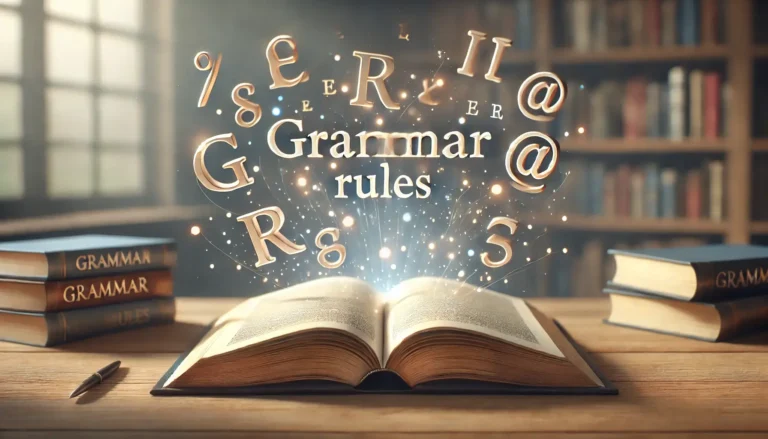A sentence is defined as a group of words that express a complete thought. A simple sentence in English consists of a subject and a verb, and it may also include an object.
As a fundamental unit of grammar, sentences typically begin with a capital letter and end with a period, exclamation mark, or question mark. In English grammar, a sentence must contain at least one main clause.
Sentence Structure
All sentences in English have a general structure known as sentence structure. Sentence structure refers to the arrangement of all the components in a sentence, including the subject, predicate, objects, phrases, punctuation, and more.
Sentence structure also involves independent and dependent clauses, how they are combined, the placement of words and phrases next to what they modify, and the use of correct grammar. In this article, we will focus on the subject, predicate, and objects.
Basic Parts of a Sentence
Every sentence needs at least a subject and a predicate. A predicate contains a verb and an object, along with any other information.
Let’s look at an example below:
Examples:
- Chanda | loves Mary.
- The cat | chased the mouse.
- Birds | fly south in winter.
In the first sentence, “Chanda” is the subject, and “loves Mary” is the predicate. This predicate is made up of the verb and the object. “Loves” is the verb, and “Mary” is the object.
A verb represents an action, and a subject is the noun performing the action. The object is the recipient of the action.
Let’s look at more examples below:
- I | am eating | nshima.
- He | writes | a letter.
- The boy | kicked | the ball.
In the first sentence, “I” is the subject, and “am eating nshima” is the predicate. The predicate is made up of the verb “am eating” and the object “nshima.”
The verb represents the action of the sentence, while the object is the receiver of the action.
Types of Sentences by Structure
Sentences can be categorized by their structure. In this section, we will explore different types of sentences.
Simple Sentence
A simple sentence contains a subject and a verb. It expresses a single complete thought that can stand on its own. In other words, a simple sentence consists of one main (or independent) clause.
To be complete, a simple sentence must have at least one subject and one verb.
Examples
- The teacher (subject) ate (verb) with his students.
- Dogs bark.
- She sings beautifully.
Compound Sentence
A compound sentence has at least two main (or independent) clauses, connected by coordinating conjunctions (for, and, nor, but, or, yet, so). Each clause has its own subject(s) and verb(s).
Examples:
- The pupil went to school, and the teacher told him to write notes.
- She wanted to go to the concert, but she had to study for her exams.
- I cooked dinner, and he washed the dishes.
Complex Sentence
A complex sentence has at least one main (or independent) clause and at least one dependent (or subordinate) clause.
Examples:
- Chanda slammed the door while walking outside.
- Although it was raining, they decided to go for a walk.
- When she called, I was already on my way.
Compound-Complex Sentence
A compound-complex sentence contains two or more independent clauses and at least one dependent clause.
Examples:
- They studied scientific rules for many years, and they decided to use science experiments because it was clear, concise, and objective.
- Although she was tired, she finished her homework, and she went to bed.
- The students were excited, but they knew they had to prepare for the test even though it was late.
Types of Sentences by Function
Sentences can also be classified based on their function. Functionally, there are four main types of sentences: declarative, imperative, interrogative, and exclamatory. Each type is discussed further below.
Declarative Sentence
A declarative sentence, also known as an assertive sentence, conveys a statement, opinion, or feeling. This type of sentence always ends with a period.
Examples:
- I am eating nshima and beef.
- She loves reading books.
- The sun rises in the east.
Imperative Sentence
An imperative sentence is used to give a command or make a request. These sentences typically end with a period, but they can also end with an exclamation mark under certain circumstances.
Examples:
- Please take your seat.
- Turn off the lights when you leave.
- I need you to go to the market now!
Interrogative Sentence
An interrogative sentence is used to ask a question. These sentences always end with a question mark.
Examples:
- When are you going to write your final exams?
- Do you know that your teacher is leaving soon?
- Where did you put my keys?
Exclamatory Sentence
An exclamatory sentence expresses strong emotions, such as happiness, wonder, sorrow, or anger. These sentences end with an exclamation mark.
Examples:
- What a sad day it was!
- How beautiful this place is!
- I can’t believe we won!
Conclusion
Understanding the various types of sentences and their functions is essential for effective communication.
Whether conveying information, giving commands, asking questions, or expressing emotions, each type of sentence serves a unique purpose in both written and spoken language.
Mastery of declarative, imperative, interrogative, and exclamatory sentences enhances our ability to express thoughts clearly and effectively, enriching our interactions and comprehension.








